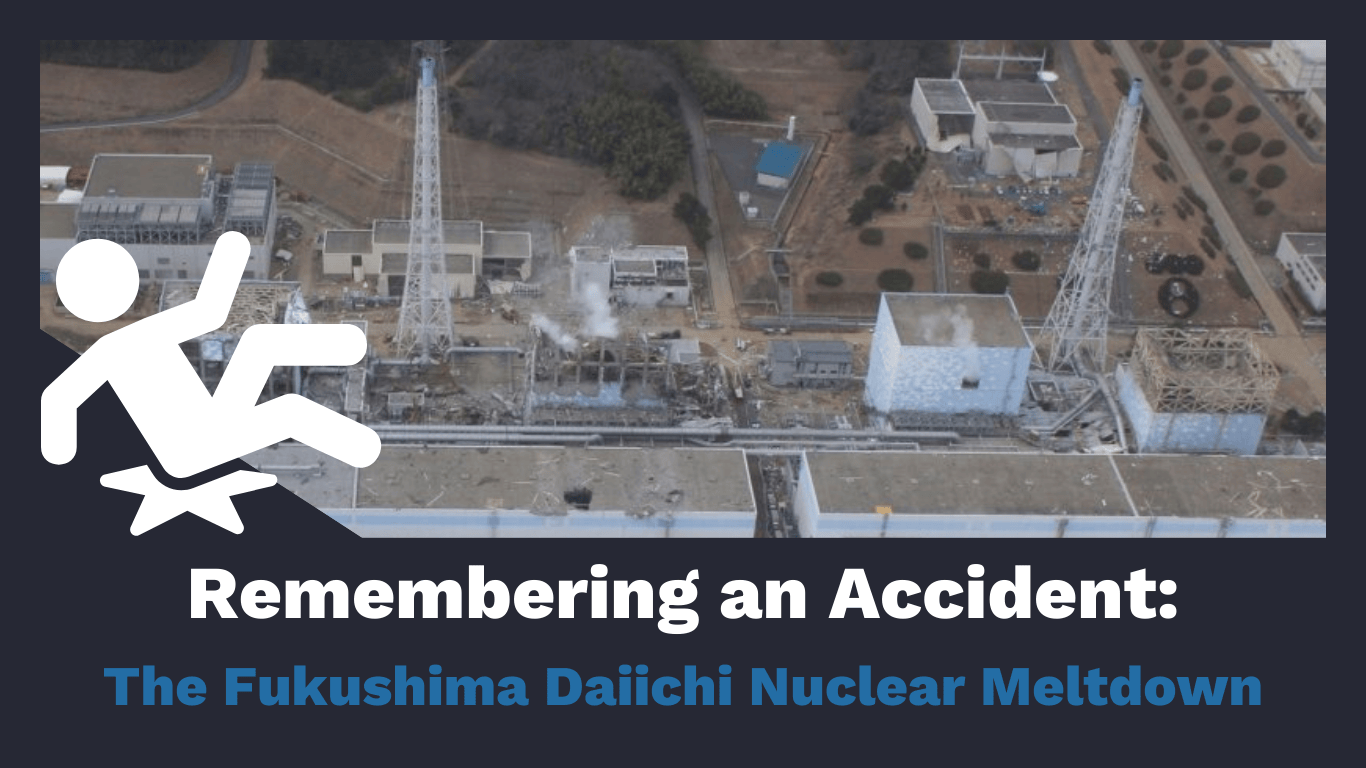Remembering an Accident: Fukushima Daiichi Nuclear Meltdown

The Nuclear Meltdown at Fukushima Daiichi Was Preventable
Alongside the damage from the tsunami, the radiation leakage from the Fukushima Daiichi Nuclear Power Plant was disastrous. Even though this occurred after an unparalleled earthquake, the data and tools were there to predict and prevent the meltdown.
What Happened at the Fukushima Daiichi Plant
On March 11, 2011, a 9.0-magnitude earthquake struck just off the east coast of Japan. It triggered an enormous tsunami that wiped out thousands of civilians. About a hundred kilometers away from the earthquake was the Fukushima Daiichi Nuclear Power Plant.
The 15-foot-high tsunami waves easily breached the seawalls, flooding the facility. This damaged several of the reactors and emergency generators. The uranium fuel then overheated, melting the cores, sparking chemical explosions, and contaminating the area with radiation.
The Institute for Radiation Protection and Nuclear Safety clearly explains the science behind the meltdown in this video:
What Resulted From the Meltdown
About half a million civilians were forced to evacuate their homes due to the onslaught of disasters. More than one hundred thousand residents near the plant had to be permanently relocated from the exclusion zone.
There has only been one death confirmed by the Japanese government, which was a worker who died from Leukemia due to radiation exposure.
While the government has reopened nearby towns in recent years, the repopulation of these areas has been slow. Former residents are weary of radiation exposure and are unlikely to return.
How the Fukushima Daiichi Meltdown Was Avoidable
While the magnitude of the earthquake was record-breaking for its time, it was not completely unpredictable. A 2008 simulation conducted by the plant’s company, the Tokyo Electric Power Company (TEPCO), suggested that a tsunami that would breach the seawalls erupts approximately once every one thousand years. However, it was not reported to the national regulator, the Nuclear and Industrial Safety Agency (NISA), until March 7, 2011.
The facility was also not designed with adequate safety measures. The seawater pumps, backup generators, and safety systems were not waterproofed. They were also built at relatively low elevations. Because of these oversights, they were immediately destroyed in the flood. This caused the power supplies and, critically, the reactors to overheat and fail.
Why Root Cause Analysis is Important
Evaluating the core issues behind an accident allows us to put measures in place to avoid a reoccurrence. Since the meltdown, the International Atomic Energy Agency has implemented stricter safety protocols, such as more independently operating backup systems and more robust equipment.
TapRooT® Root Cause Analysis was created to understand and prevent accidents. If you need any help with performing an incident investigation or improving a root cause analysis program, feel free to reach out on our contact page.



